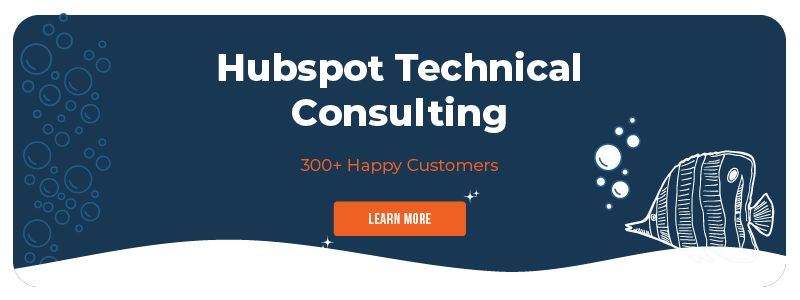Inbound Marketing Content to Include on Your Manfuacturing Website
Danielle Fauteaux

The long and short of it is that in the modern buying landscape, manufacturers who are able to solve more of their end users problems are able to sell more products. Here's how:
How Does Inbound Marketing Work?
Inbound marketing uses high-quality content and SEO best practices to generate leads and nurture them through the buying journey at multiple levels in your channel.
When done properly, your inbound marketing strategy will achieves two primary outcomes for channel sellers:
- Attract new partners to recruit into your distribution network and delights them post conversion.
- Provide a steady flow of end user prospects to direct and indirect sales reps.
By positioning your company as authoritative about the end consumer's problems and best options for a solution, your distribution marketing strategy will pivot from being product focused to being problem and project focused, inspiring trust and building buyer confidence to make the purchase.
Driving Customers Through the Buying Journey to Purchase
Customers rarely go from looking at your website to making substantial purchases. While it does happen on occasion, most sales are a result of learning about a company and its products and evaluating them over a period of time.from Architects & Interior Designers
Especially in the realm of construction, when so many stakeholders are involved in the product specification and decision making process in general, it is up to you as the manufacturers to educate all potential decision makers about the value of your product and brand offerings, as your distributors and resellers often will not take the initiative to do so.
The process of guiding researchers towards purchase is called the buyer’s journey and consists of three primary stages:
- The Awareness Stage, when end users know they have a problem.
- The Consideration Stage, when end users are evaluating different solutions to their problem.
- The Decision Stage, when end users are choosing between vendors for a specific kind of solution to their problem.
How Do You Market Products?
Various types of inbound marketing content cater to the buyer's journey in these different stages.
For example, a builder has been using the same window system for decades and realizes he is losing potential home buyers because he cannot claim energy efficiency as part of his value proposition. He is aware that he is losing potential revenues because his current choice in window system does not meet buyer expectations in the current economy.
In this example, a manufacturer who sells energy efficient window systems can capture this potential customer via a strategic content marketing plan that includes pieces such as the following:
Blog articles
Blog articles that answer questions about end user problems, provides comparative information, and high value For the windows manufacturer example, blog articles discussing energy efficiency purchase motivations among varying demographics, comparing options for sealing non-energy efficient window systems better during installation, and educating on installation ease to remove hesitations and decrease switching-costs for the builder.
Lead Capture Content
Downloadable white-papers and eBooks with up to date statistics and research that confirms historical, current, and forecasted consumer purchase trends; cost comparison white-papers; and longer form discussions on problems with current window systems during home design and construction with your recommendations for improved systems and processes.
Downloadable Resources and Tools
Checklists, templates, and other copiable resources relevant specifically to the end user, in this case a builder, such that they can compare window system options based on key variables; pricing calculators so they can price out window allowances for current builds underway; and sales questionnaire templates that they can use client facing. Consider what information is needed to maintain building code compliance and how you can easily provide up-to-date information to all parties in your channel, like this example of a thermal performance database.
Case Studies
When you show real results from similar buyers who tried your product and were highly satisfied, you foster a decision making environment where it's easier to follow the happy customers' lead and give it a try. These case studies need not be burdensomely long; the critical aspect of these case studies is that they prove your product and brand is the solution necessary to the buyer's problem. Showcase how you will be able to get them to their desired future state by specifying your products or using your company as their trusted supplier.
Spec Sheets and Detailed Product Information
Stakeholders throughout your channel distribution network are searching online for answers to their basic and advanced questions regarding your product. End users are looking for detailed information to ensure the product will work in their construction process and alongside other products and finishes they are using. Because this is what end users are looking for, distributors and resellers also need to have this information readily accessible as they nurture deals to closing.
Durability Test Videos
"How long will it last" is a top of mind question for most manufacturing product consumers. It's part of their value assessment compared to the cost. You can point blank say, "Lifespan = 15 years" or give other indicators of the product's durability. In certain instances, it is more helpful to users to show them how your product stands up to wear and tear. Devise a testing ground to simulate normal wear and tear on your product and film the results. These videos are great not only for your website, but for sharing on social media to gain exposure.
Product Style Sheets / Mood Board Pairings
Specifically when targeting architects and designers, manufacturers can help them and improve their chances of being specified by creating graphic heavy product style and pairing sheets. These would provide some product pairing options that work well with your product. This is especially effective for manufacturers of finishes, appliances, and construction "accessories."
Construction Product Installation Videos & Guides
Of primary concern to end users of your products is the installation process. They need to fully understand what problems could arise when installing your product and what to be mindful of to ensure they do not make costly mistakes that eat into their profit margins or slow down a project's timeline. As the manufacturer, YOU are the expert of your product. Have your marketing teams collaborate with your product design and engineering teams to develop content and videos that take a step by step look at the install process and covers mistakes to avoid and tips for an effective install.
You need to demonstrate thought leadership, industry knowledge, and showcase your experience helping others achieve their goals. Your inbound marketing content should be genuinely helpful, not a sales pitch.
Differences in Content Message For Different Buyer Journey Stages
Not all content or promotional messages will be intended for all researchers or for all times. Keep your content messaging tailored to the stage of the buyer's journey that any of the stakeholders making a product decision would be evaluating.
Awareness Stage content Messaging
Remember, in the awareness stage you are educating potential customers about the problems they’re facing and validating the pain points they have. Your objective is not to focus on messaging about your products yet because you specifically are not what they are looking for; they’re seeking information about their problem and identifying the need to find a solution.
Prospective buyers enter the awareness stage when they realize there has been a change that they need to catch up with.
Because of this, your content strategy and downloadable resources do not need to always pertain specifically to what you provide as a product - they merely need to solve the problems of your target buyer and answer their key questions.
Consider that the buyer in the earlier example is thinking about windows 0.01% of the time they are awake. What are the 99.99% of other problems you can help them solve and questions you can help answer?
Consideration Stage Content Messaging
As buyers move into the consideration phase, they know they have a problem to solve; now for them it is a matter of picking the right type of solution. Content speaking to prospects in this stage should address competitive kinds of solutions.
The builder in the windows example doesn't have an energy efficiency windows problem directly; he has a customer perception and sales messaging problem. This means that he could solve the problem in various ways, such as
- Option 1: Find an energy-efficient window system.
- Option 2: Deploying better window sealing products to fill the gaps better.
- Option 3: Decrease the number of leakage points in the home to improve overall house energy efficiency.
- Option 4: Sell energy-efficiency values to customers based on other energy efficient features of the home and skate by with their current windows system.
- Option 5: Change nothing.
How they choose which option to pursue can be swayed by the kinds of educational content they find during their researching journey. Either you can let your voice on the matter be heard by publishing content discussing these options, or you can let your competitors do the talking. All the while keeping in mind that the fifth option, do nothing, is a top choice among change-averse contractors.
As potential customers are doing their research, it’s an opportunity for you to build their rust in your ability to solve their problems in a well-rounded, informed, and grounded way.
Decision Stage Content Messaging
As buyers make their final decisions, you need to explain your unique selling proposition — why someone should choose your construction product specifically and do business with you rather than anyone else.
By the time buyers have reached the decision stage, they should have a full understanding of why your option is the best choice, the value they will gain from the purchase, and are now comparing their vendor choices.
Top questions for end users during the decision making stage are:
- Will the product arrive on time?
- Can I order the right amount of product?
- Is the product high quality?
- Does it fit the budget / construction allowance?
- Have I used the product before? Is it easy to install?
- Can I order this myself or do I need to initiate back and forth with a sales rep?
- What kind of post-sale support and assurance is available?
Providing price calculators, warranties or satisfaction guarantees, dedicated purchase and account managers (who are knowledgeable and actually can solve customer problems), free samples, on-site installation training, product and distributor locators or eCommerce capabilities are several ways that manufacturers can provide added-value to the sale and win the heart and mind of the prospective buyer.
Sell More By Solving Customer Problems
The quality of your content is crucial. It reflects on your business and can shape how customers view your company, your products, and your service. This comes into play in inbound marketing in several ways. Here are a few quick tips to produce great inbound content and how to structure things on your website when they click.
Especially in the early stages of discovery, it’s not so much about the specs or even the pricing. It’s about focusing on helping the buyer solve their problems. Your marketing materials should demonstrate how your products help buyers when they’re searching for construction materials suppliers.
Remember, the buyer wants to be the hero of their story—how does your product help them be the hero?
For example, contractors aim to be their customer's trusted advisor for the construction project, architects aim to be the visionary and path finding leader in their field, local distributors aim to be the go to source over an above larger conglomerate materials resellers. Not sure where to start? We can help.
Ready to Dive In?
Work with our team of Business Process experts and watch us take manual clunky systems, tech stacks, and processes and turn them into tailored, intelligent workflows that deliver business outcomes.


